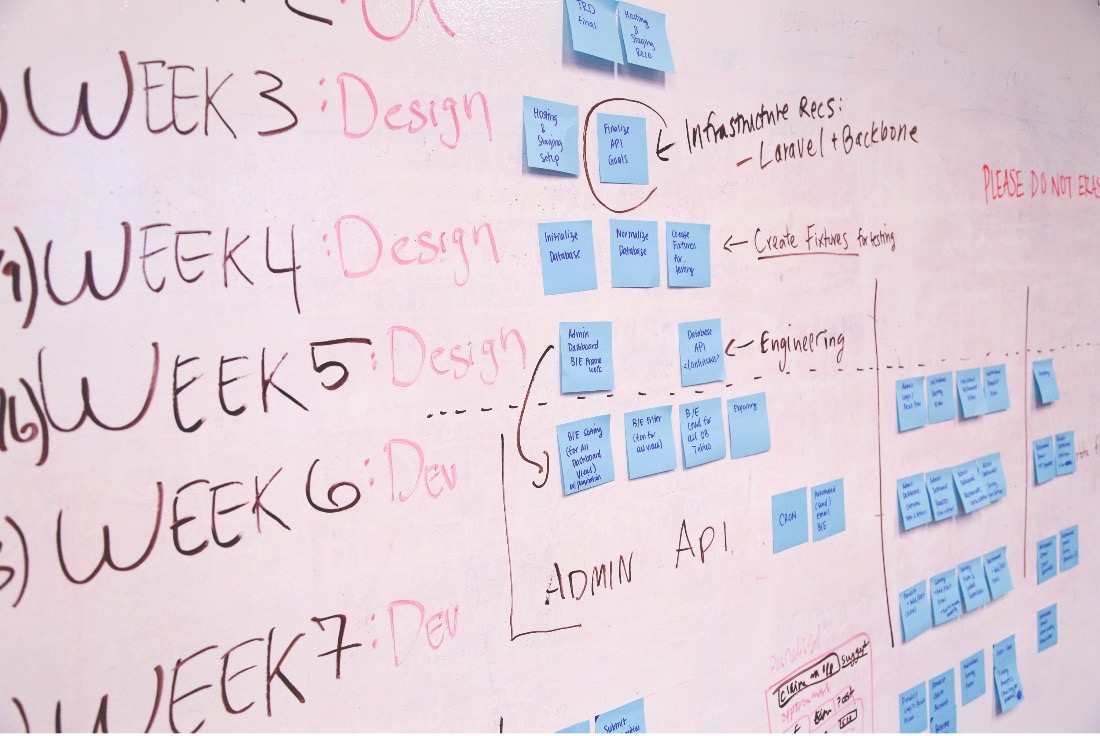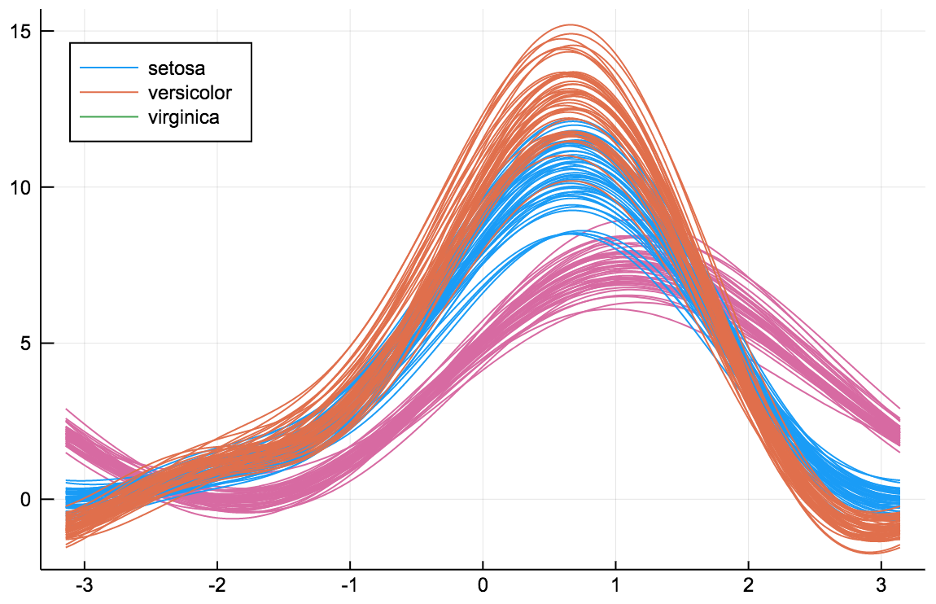Business management
Business Management (BM) includes the planning, the coordination and the organization of business activities. It is related first to the allocation of resources (material, money, machines, staff, and so on) to accomplish the defined goals efficiently and effectively. Then, it encompasses the direction and the monitoring of the resources ensuring the planning’s success. BM deals with strategic vision since a good coordination asks for motivating and engaging employees, creating a working environment flexible, lean, and where change is encouraged.
In this context, we study how technological innovations can be integrated in business process management to support organizations and entrepreneurs to face the challenges of the Industry 4.0 and to develop new business models.

Pretotyping
Pretotyping is a set of tools, techniques, and tactics designed to help you validate any idea for a new product quickly, objectively, and accurately. The goal is pretotyping is to help you make sure that you are building The Right It before you build It right. Pretotyping was originally developed at Google in 2010 and since then has been tested, refined, taught, and put into practice with great success in hundreds of projects and organizations.

Mtm4.0
Methods-Time Measurement (MTM) is a predetermined motion time system that is used primarily in industrial settings to analyze the methods used to perform any manual operation or task and, as a product of that analysis, set the standard time in which a worker should complete that task. Traditional time studies (e.g., stopwatch or direct timing, instantaneous observations, predetermined time-motion studies) depend on the estimation, are time-consuming and affected by human factors. For this reason, we developed an MTM4.0 system based on IoT technology to fill the gap between the practical needs and the errors that probably would happen in using these methods.

Hr4.0
HR 4.0 includes all the new activities and the digital technologies referred to the management of people in a company. It encompasses employee recruitment, training and development, performance evaluation and management of employee-benefits and reward.
In this context, we explore new indicators for an intelligent integration of data in HR management (e.g., measuring the readiness of employees with respect to I 4.0 paradigm using a data driven approach). Moreover, we aim at mapping future professional roles in the digitalization era, considering on one hand the new skills and competences needs and, on the other hand, the challenges for the Education Systems to effectively prepare students for the job market.

Industry 4.0
Industry 4.0 (also referred as Fourth Industrial Revolution) refers to a novel approach to the industrial system, that is based on the real-time connection of people, machines and objects for the intelligent management of logistic-production systems. The term Industry 4.0 has been initially formulated in Germany in 2011 by two researchers during the Hannover Trade Fair, to connote the current phase of computerization of the manufacturing systems. The Fourth Industrial Revolution had changed the role of play in the market as happened previously with the first, second and third revolution.
Industry 4.0 is one of the main current themes of B4DS groups. We explored new method for assessing the readiness of a company to face the digitalization era. We identified novel approach for extracting and mapping industry 4.0 technologies and finally, we built cutting edge tool, namely Technimeter, for identify 4.0 technologies in textual data.

Business ecosystem mapping
The business ecosystem is the dynamic structure of organizations and stakeholders that are interrelated each other in business activities to create and deliver values to customers. So, business ecosystem mapping aims at identifying the involved entities and understand their relationships. The map is a strategic tool that supports managers in visualizing the complexity of the network and detect strengths and gaps in the innovation ecosystem.
Our studies are focused on the new approaches in open innovation and crowdsourcing. We are interest in examining the evolution of collaborative networks, using the co-citation and bibliographic analysis; modelling workflows, using data about the knowledge transfer in supply chains; and developing tools for collaborative design of new products.

soft skills
Soft skills encompass transversal capabilities, social skills and behavioural skills. They refer to how someone behave in working environment with colleagues at various levels and with customers. They are related to personality traits and do not depend on acquired knowledge. Nowadays the digitalization has given rise to soft skills, that appear as complementary of hard skills (pure technical skills). The concept itself has blurry boundaries since it is cornerstone of the personal development of a person [ESCO].
Our studies are focused on tools to automatically extract soft skills from unstructured texts applying Named Entity Recognition (NER) on a corpus of scientific publications. The aim is to develop a map of soft skills to clearly define this concept and fuel future quantitative research on this topic.

engineering management methods
Management engineering methods are used within organizations to plan, develop, implement, monitor and improve business processes. In this context, by applying management engineering methods, we elaborate innovative business models, develop product and market strategies and guide the innovation process of companies.

qfd
Yoji Akao, the original developer, described Quality Function Deployment (QFD) as a “method to transform qualitative user demands into quantitative parameters, to deploy the functions forming quality, and to deploy methods for achieving the design quality into subsystems and component parts, and ultimately to specific elements of the manufacturing process.”
Our research focuses on an effective translation of customer needs into product requirements at the very early stage of Voice Of the Customer (VOC) translation into Critical To Quality (CTQ).

cognitive bias
Cognitive bias is a systematic distortion of a human behaviour in judgment and decision in relation to something. Humans create their own subjective reality based on their perception of the world input. This perception could be affect the decision, the judgment, the interpretation in systematic pattern of deviation from norm or rationality. The study of cognitive biases is important for helping people in avoiding a misleading interpretation of the real world.
We explored in our study how the cognitive biases affect the experts in technological forecasting and foresight. We offer a number of examples in which these biases may indeed create distortions and reviews the potential impact of several introduced methods, in the field of technology foresight and in related areas, to mitigate the distortions.

econometrics
Econometrics refers to the use of statistical and mathematical methods to develop models about real economic data and their relations. Typically, econometrics relies on regression models and hypothesis testing. The models are used for evaluating assumptions and forecast future trends.
Our studies are oriented in technologies foresight to identify areas of interest in near future, compare technologies performance and detect possible failures. Moreover, we are interest in the analysis on European research. As a meaning of example but not limited to, we examined academic performance of researchers measuring scientific publications metadata.

data science management
Data Science Management is the process of making decisions driving teams and processes relying on data science. Being a good Data Science Manager requires two types of skills, the most important one are good management skills, the other necessary one is a strong data science knowledge enabling to exploit all the methodologies provided by data oriented frameworks in a productive and efficient way.

data visualization
Data Visualization is the branch of data science that studies techniques and tools used to convey the information present in any dataset in a concise and effective way through images. What most concers this field is the development of ways to represent aggregated statistics about data and to join different plotting techniques to convey as much as possible of the information available in the simplest form.

image processing
Image Processing is a branch of computer science that involves working with static images or videos. In the last years, the improvements in deep learning made it so that this field almost entirely consists in the development of deep learning models able to process large amounts of images and learn the patterns useful for the task at hand.
We are interested in any available data source, and images are one of the most important. In particular we look at the images that appear together with text, in scientific papers or in patents, and try to leverage the relation between them and the text they come from in order to extract more precise information from these documents.

natural language processing
Natural Language Processing (NLP) represents all the techniques used to work with text in computer science. Application of these techniques to a company environment are NLP Products, examples of such products are, automatic information extraction from text, natural language generation, and more.
Our interest is to explore the world of natural language processing for new techniques that might help us in our work. A part of what we do is investigating how these techniques can be turned into products that would be useful in a production environment, for example by enabling to leverage information in open source domains or in proprietary textual data that would be hard to explore without NLP solutions.

paper intelligence
Paper Intelligence is the practice to gather information about the current trends in the scientific and technological world from publications. Indeed, often, what today is research, tomorrow will be technological development. The improvement of Natural Language Processing techniques is making more and more valuable to perform such information extraction since extremely detailed insights can be retrieved.
One of the methodologies we use most often at B4DS is information extraction from text. Scientific papers are not exempted from this search, indeed we look not only for technological change, but also for insights enabling us to orient our research towards what is most relevant to the scientific community.

patent intelligence
Patent Intelligence represents the practice to gather technical information from patents with the goal to drive companies decision making. The recent development of Natural Language Processing techniques allows to extract extremely fine grained information making Patent Intelligence always more effective and thus valuable for those interested in technological development.
The information exchange between the research group and the company is a continuous process where we provide insights about the newest techniques, whereas they provide us with information about which are the most interesting Natural Language Processing products for the business world.

scientometrics
Scientometrics is the research field involved with the quantitative study of scientific publications. It is constantly growing as a field due to two reasons, the larger and larger amount of scientific publications available making it hard to investigate this data in a human based way and the development of quantitative analysis techniques able to deal with such large amounts of information.
Our focus is on a text based approach to scientometrics. This not the most usual approach but it is itself constantly growing and at the same time provides us with a type of information that is more fine grained than the one extrapolated from higher level features such as citation counts or co-authorship.

